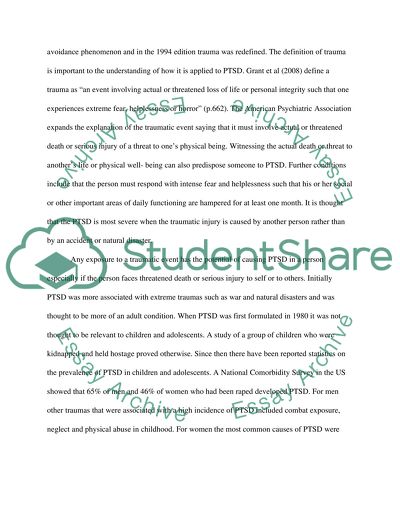Cite this document
(“Post Traumatic Stress Disorder Research Paper Example | Topics and Well Written Essays - 1500 words”, n.d.)
Post Traumatic Stress Disorder Research Paper Example | Topics and Well Written Essays - 1500 words. Retrieved from https://studentshare.org/miscellaneous/1560041-post-traumatic-stress-disorder
Post Traumatic Stress Disorder Research Paper Example | Topics and Well Written Essays - 1500 words. Retrieved from https://studentshare.org/miscellaneous/1560041-post-traumatic-stress-disorder
(Post Traumatic Stress Disorder Research Paper Example | Topics and Well Written Essays - 1500 Words)
Post Traumatic Stress Disorder Research Paper Example | Topics and Well Written Essays - 1500 Words. https://studentshare.org/miscellaneous/1560041-post-traumatic-stress-disorder.
Post Traumatic Stress Disorder Research Paper Example | Topics and Well Written Essays - 1500 Words. https://studentshare.org/miscellaneous/1560041-post-traumatic-stress-disorder.
“Post Traumatic Stress Disorder Research Paper Example | Topics and Well Written Essays - 1500 Words”, n.d. https://studentshare.org/miscellaneous/1560041-post-traumatic-stress-disorder.


